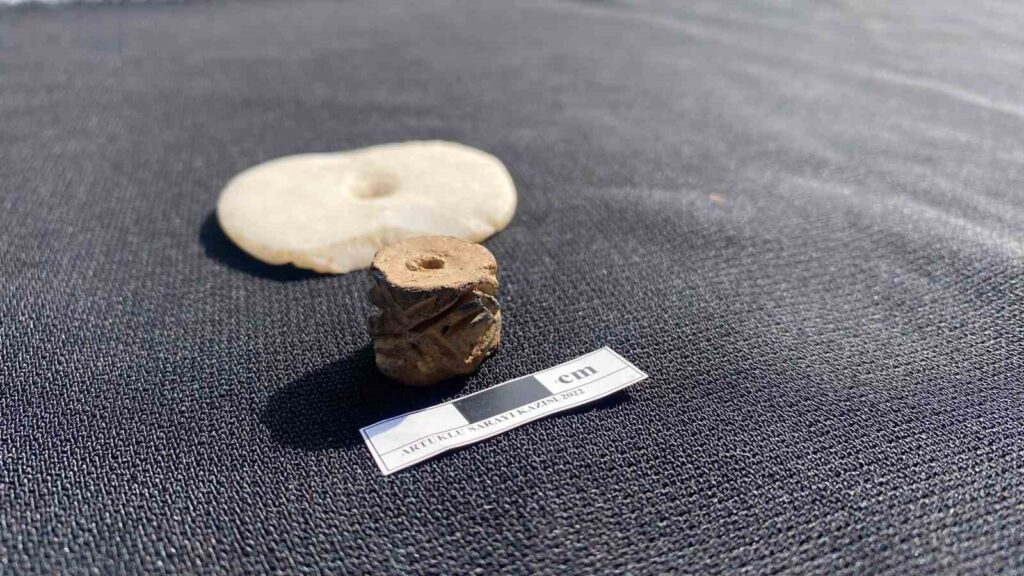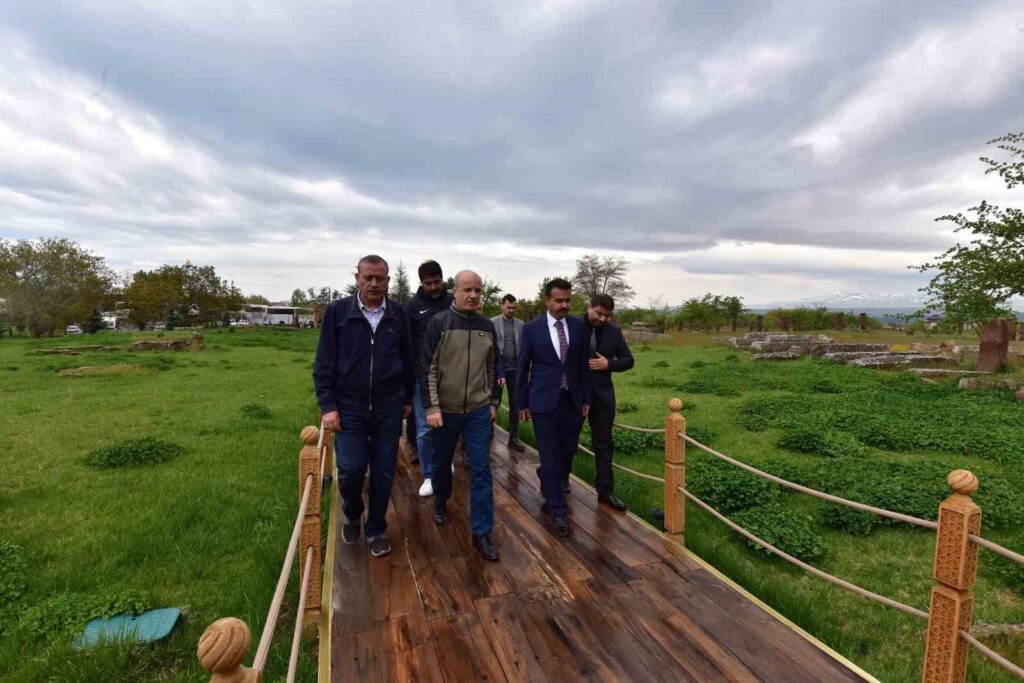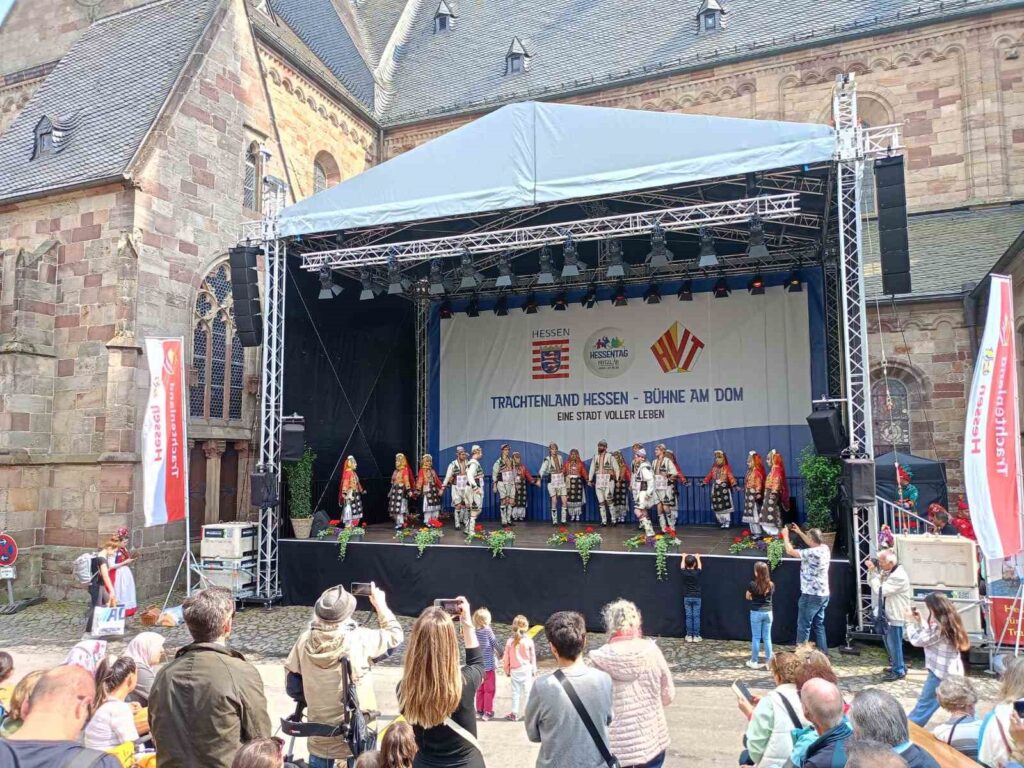A cylindrical seal dating back to 3400 BC was exhibited in Diyarbakır.
A cylindrical seal dating from the Uruk Period, dated between 3400 and 3100 BC, was exhibited from the excavations at Amida Mound in Diyarbakır. Dicle University stated that they will continue to encounter many surprising finds as the mound is excavated.

A cylindrical seal dating back to the Uruk Period, dated between 3400 and 3100 BC, was exhibited at the Amida Mound excavations in Diyarbakır. Professor Dr. Irfan Yıldız, a faculty member at Dicle University, noted that they will continue to encounter many surprising finds as the mound is excavated. “This year, in the excavation we opened at the palace gate area, along the king’s road, it has been clarified that the settlement here dates back to 10,000 years based on the obsidian pieces and pottery fragments found in layers following the previously identified burn marks. These will also be sent for analysis. We are currently stating an estimated date,” he said.
The Inner Castle Artuklu Palace excavation is being conducted at the Amida Mound, located in the Sur district of the city center, within the İçkale Museum Complex area. The area where the excavation is taking place is listed as a UNESCO World Heritage Site.
The excavation, first conducted under the leadership of Professor Dr. Oktay Aslanapa in 1961-62, resumed in 2018 under the leadership of Professor Dr. Irfan Yıldız, with contributions from the Dicle University Rectorship and the Ministry of Culture and Tourism after a 56-year hiatus.
The mound has hosted many civilizations, including the Hurri-Mitanni, the Bitzamani Kingdom, the Assyrians, the Urartians, the Medes, the Persians, Alexander the Great, the Seleucids, the Great Tigran Kingdom, the Romans, the Byzantines, the Sassanids, the Umayyads, the Abbasids, the Mervanids, the Seljuks, the Nisanoğulları, the Artukids, the Ayyubids, the Akkoyunlu, the Safavids, and the Ottomans, and excavation work has been ongoing for 7 years. The excavations are classified as a 12-month excavation status by presidential decree.
Professor Dr. Irfan Yıldız stated that they continue their work in both the king’s road area and the area where the palace is located, and he mentioned that a cylindrical seal was especially found in this year’s studies.
Yıldız expressed the importance of the cylindrical seal for them, saying, “Because it is the first cylindrical seal found in our excavation. In the excavation work we have been conducting since 2018, approximately 1800-year-old secret passages, water canals, 1700-year-old king’s road and burial chambers, 800-year-old marble pieces, and fire layers from 5000 to 7000 BC have been found. With the work we are doing this year, it has now been clarified that continuous life has been maintained at Amida Mound for 10,000 years. In terms of continuous habitation, Amida Mound is currently the second city in the world. Jericho in Palestine is in the first place with its 11,000-year history,” he said.
Yıldız noted that they will continue to encounter many surprising finds as the Amida Mound is excavated, and he continued, “The seal is a cylindrical seal. As for the date, it can be dated to the Late Uruk Period between 3400 and 3100 BC. A similar seal had previously been found during the excavations at the Muslim Hill in Bismil, Diyarbakır. It was found intact there; ours arrived broken. The seal has geometric decorations in the shape of a diamond slice. The seal is unique both in terms of the characteristics of the period it was made and the decorations on it. Such seals are generally used to seal documents, close the mouths of sacks, and close the mouths of pottery. The discovery of the seal indicates that there was a strong trade network during that period. A seal from the Chalcolithic period had also been found before. Both that seal and this seal are seals that can be hung around the neck with a string. It is the first cylindrical seal found in our excavation, but it is the second find in the excavation.”
“It has been determined that Amidi, the city of Amedi, has burned three times” Yıldız stated that when they first started, they estimated an average age of 5000 years, saying, “Subsequent data indicated 6, 7, 8 thousand, and finally 9 thousand years. Especially due to the burn layers caused by the burning of the city between 5000 and 7000 BC, we had estimated that date. From the burned wooden pieces and burned bone fragments that we sent to TUBITAK, it was determined that those fires occurred between 7000 and 5000 BC, indicating that the city was an important city during that period, and it has been determined that Amidi, the city of Amedi, burned three times. With the TUBITAK analyses, the history of the city where Amida Mound is located today, Diyarbakır, has been clarified as 9000 years. This year, in the excavation we opened at the Palace Gate area, along the King’s Road, it has been clarified that the settlement here dates back to 10,000 years based on the obsidian pieces and pottery fragments found in layers following the previously identified burn marks. These will also be sent for analysis. We are currently stating an estimated date.”







